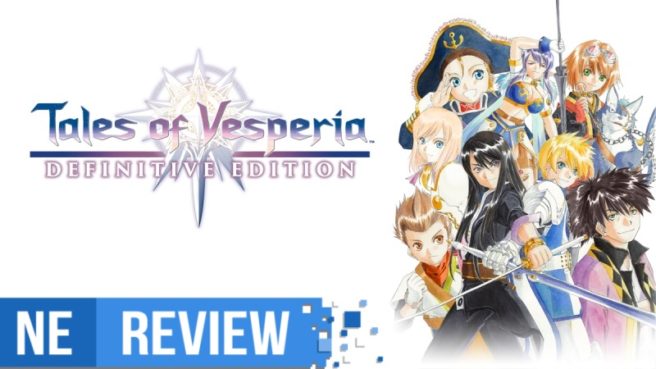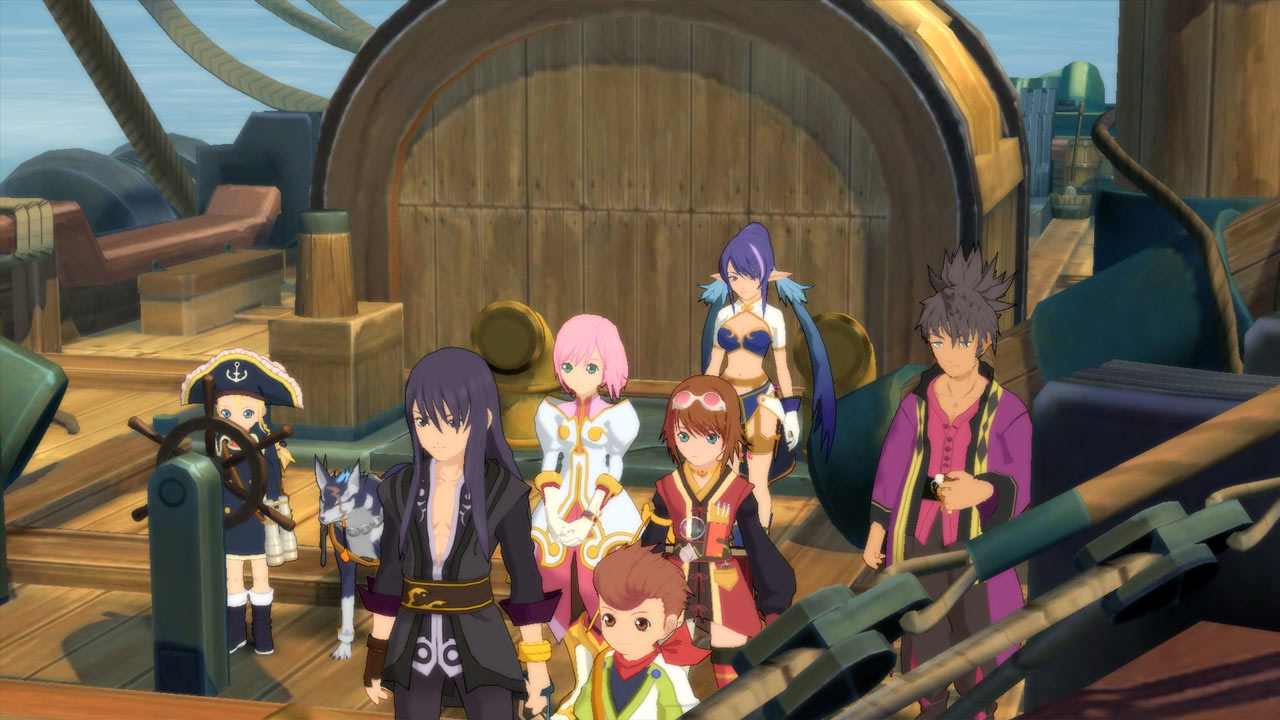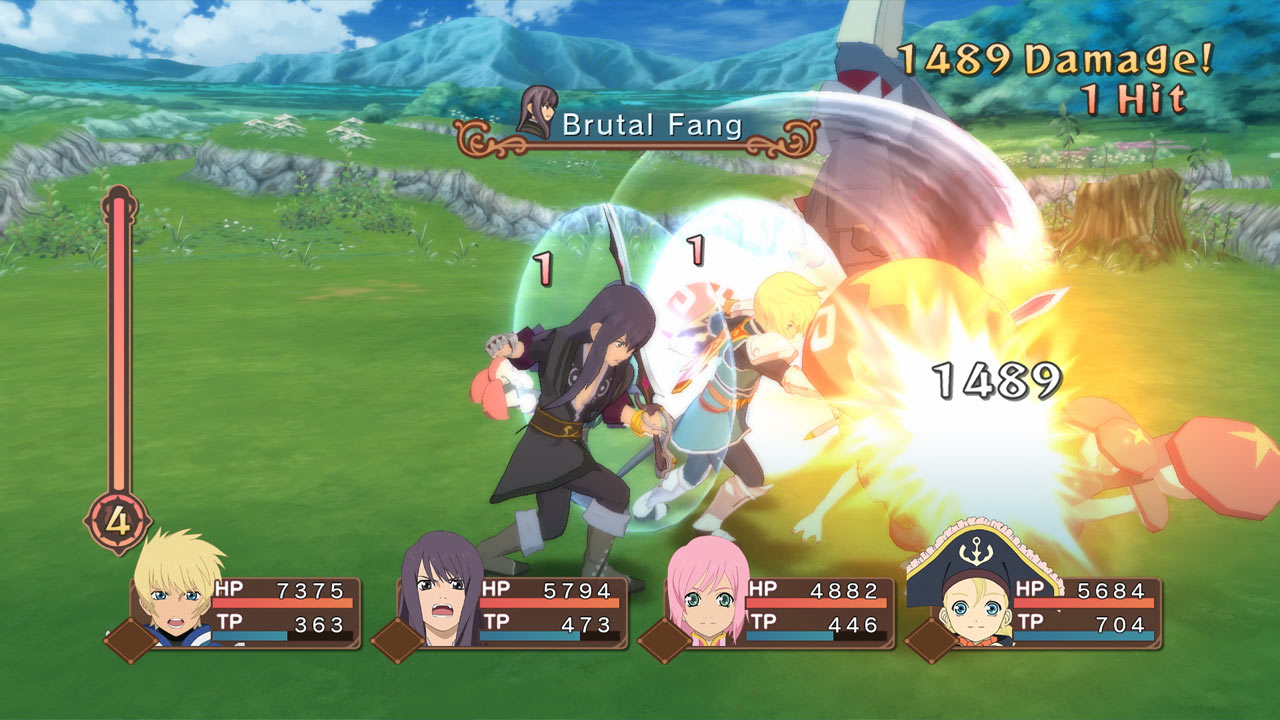[Review] Tales of Vesperia: Definitive Edition
System: Switch
Release date: January 11, 2019
Developer: Bandai Namco
Publisher: Bandai Namco
Over the course of its early lifespan, the Switch has already managed to gather an extremely impressive library of third-party games to its repertoire. From hugely successful indies to critically acclaimed entries in long-standing JRPG franchises, it’s obvious that publishers and developers have noticed the success of Nintendo’s latest console. Continuing with the Switch’s recent streak of adding multiple different JRPG franchises to its library, Bandai Namco has added a well-known entry from one of its most famous series: Tales of Vesperia. However, this isn’t simply a port of an older game. Tales of Vesperia: Definitive Edition is a remaster of the PS3 port, with updated graphics, voice over, and extra content. So how well does it stack up to not only the original version, but the other JRPGs lining the Switch’s library?
Tales of Vesperia: Definitive Edition tells the story of Yuri Lowell, an ex-imperial knight turned slum-dweller, and his adventure across Terca Lumireis. Yuri’s adventure begins when an aque blastia core, an ancient magical technology that provides water to Yuri’s home district, is stolen. During his quest to retrieve it he meets many characters with widely varying personalities and motivations that help him in his quest including: Estelle, a sheltered noble; Karol, a young guild member; and Rita, a mage who studies blastia – just to name a few. While avoiding getting into specific story details, the story grows and evolves in a bunch of unexpected ways over the course of the games lengthy runtime. While the story begins somewhat slowly, once the initial conflict of reclaiming the stolen blastia core is resolved the story evolves into something truly grand. Vesperia is a standalone game that can be started completely blind with no prior experience to the Tales series. While there were some tie-in materials produced, such as an animated movie that serves as a prequel to Vesperia’s story, it is completely supplementary to the game.
The gameplay of Vesperia is fairly unique when it comes to JRPGs. While exploring the field map, you navigate a down-scaled version of the world, engaging with locations to explore and encountering monsters to enter battle. While in battle and exploring towns and dungeons, your party explores fully realized environments. While exploring towns, you can experience the standard RPG faire, being able to talk to NPCs, explore buildings, and shop for items and equipment all while encountering the odd collectible or sidequest here and there. However, the combat of Vesperia is what sets it apart from other JRPGs and will probably be a point of contention among players new to the series.
Combat unfolds in an arena-like setting where you control one main party member and three AI controlled party members. Although combat is set in a 3D circular arena, characters are locked on a 2D plane while targeting a specific monster, akin to most fighting games. During combat, each character has a standard series of attacks that can combo into each other, as well as the ability to guard and reduce damage and jump over enemies. While you can hold the ZL button to walk around the 3D arena in any direction, your attack is limited to a dash attack and once the button is released you are put back on the 2D plane. In addition to your standard attack, characters can equip multiple “artes” that act similarly to magic attacks and consume a TP meter. Chaining together standard combat attacks and artes is the bread and butter of Vesperia’s combat, as well as guarding properly and utilizing the 2D plane to attack multiple monsters at once.
As a new player to the Tales series, the combat in Vesperia took quite a long time to get used to. At first, it felt like the controls were complicated and a bit too rigid and unwieldy. This led to some major difficulty with early boss fights, as the opportunity to get used to combat in between that time is somewhat limited. Admittedly, the learning curve to combat was a bit too steep for me, and I switched the difficulty to ‘easy’ very early on after failing a boss fight multiple times. This ended up helping me tremendously while I was still trying to get a grasp on the combat system but did make most fights laughably easy. While I wouldn’t recommend leaving the game’s difficulty on ‘easy,’ I would definitely say it’s a good option to consider if you’re struggling early on. Luckily, difficulty can be changed at any time with no consequences. As the game progresses, more characters join your party, and more combat options slowly become available, players will naturally become adjusted to the unique combat system. It may take quite a while, but combat does open up and become quite rewarding as you learn the many nuances it offers.
As mentioned before, when the combat evolves many new elements come into play that shape how you think about battles. For instance, elemental attributes such as fire, water, light, and dark affect both party members and enemies. There is also a battle mechanic called ‘Fatal Strike’ which can kill normal enemies and cause serious damage to bosses. Chaining Fatal Strikes build the party’s ‘Over Limit’ which allows party members to continuously attack with both regular attacks and arts. Additionally, the Over Limit gauge can be charged to four different levels, each with varying effects. Finally, the last way party members can be customized for battle is by equipping skills. Fairly straightforward, skills are equipped to either the character or their weapon and allow for new techniques in battle, buffs, or resistances. It takes a while for Vesperia’s combat to open up, but as it slowly unfolds there is an enormous amount of customization and experimentation to be had.
The game’s localization is very well done from what I was able to experience. The writing was believable and charming, and most voice performances were excellent. However, I do have one issue with the voice acting, and this pertains to the game’s event scenes which received new voice overs. Most voice actors returned to reprise their roles, except Yuri. Yuri, who was originally voiced by Troy Baker, is now voiced by Grant George for all additional event scenes. While George’s performance is solid in its own right, there is an unfortunate dissonance between his performance and that of Baker’s original. It almost makes Yuri feel like two separate characters, which can feel a bit jarring at times. Aside from that one issue, the performances were very well done. Additionally, you can also choose between English or Japanese VO at any time, depending on your preference. Vesperia also incorporates ‘skits’ along with the aforementioned event scenes, which are optional little conversations between party members that can be viewed during certain moments by pressing the minus button. All in all, they are a nice way to add extra character development and charming interactions between the party.
In terms of its performance compared to the original, Tales of Vesperia: Definitive Edition is a much prettier package than it’s ever been. The graphics look crisp and clear on the Switch, in both docked and handheld mode. Textures are smooth and vibrant, and character models look sleek as well. The game runs at fairly smooth 30 frames per second almost everywhere except battles which run at 60. However, I did experience some occasional drops while exploring the field map. Aside from those drops, the remaster looks great and supports the game’s art style better than ever.
The Verdict
Tales of Vesperia: Definitive Edition is a solid remaster for a fan favorite entry from the Tales series. While the story meanders a bit in the beginning, once the bigger picture begins to unfold it develops into something pretty special. While combat may turn off some new players to the series, if you’re looking for a more unorthodox battle system from the standard JRPG fair, Vesperia has you covered. Of course, returning players will feel right at home and will appreciate some of the added tweaks to the battle system and the intricacies it holds as the game goes on. On the whole, Tales of Vesperia: Definitive Edition is another great addition to the Switch’s ever-growing library of quality JRPGs.
Tales of Vesperia: Definitive Edition review copy provided by Bandai Namco for the purposes of this review.



